TRAVEL IMPRESSIONS OF AN ART AND HISTORY LOVER
and my experiences as a teacher in China
UMGEBUNGSENTDECKER
Mount Athos




I've wanted to go to Mount Athos for a long time, but it's not that easy to get there. You need a visa and therefore have to deal a little more extensively with the travel destination in advance. In the monastic republic of Athos everything is different, even the term "travel destination" does not fit, because one does not "travel" to Mount Athos, one "makes a pilgrimage". When applying for a visa, pilgrimage is the only official reason that entitles you to want to go there.
I was interested in the monastic republic because I wanted to see a place where time seems to have stood still - and has been for thousands of years.
To experience something like this, you don't have to go to Tibet or to the Buddhist kingdom of Bhutan on the edge of the Himalayas, the monastic republic of Athos next to Greece is enough.
I also wanted to immerse myself in the Orthodox Church, learn about its mysterious and enigmatic rituals, and see its art.
Visas are issued very limited. Only a few hundred Orthodox Christians are allowed to enter each day. There are far fewer Roman Catholic and Protestant Christians in the eyes of the Orthodox Church anyway, so the number of pilgrims is limited to a maximum of ten pilgrims per day.

%20Kopie.jpg)
Von Düsseldorf ging es nach Thessaloniki.


From Düsseldorf it went to Thessaloniki. The Balkans lay below us, and the photo shows Sarajevo, the capital of Bosnia and Herzegovina.
Von Thessaloniki ging es am nächsten Morgen nach Ouranoupoli, einer kleinen Hafenstadt auf der Halbinsel Chalkidikí und zugleich der letzte griechische Ort vor der Grenze der Mönchsrepublik. Von dort legen Schiffe ab, die die Pilger zum Athos bringen, täglich zweimal.
Nur über das Meer kommt man zu der Halbinsel, auf dem Landweg gibt es keine Straße, sondern nur einen etliche Kilometer breiten, verwilderten Streifen Natur, der die Republik von Griechenland trennt.
Nach einigen Formalitäten in Ouranoupoli hatten wir schließlich unser Visum in der Hand und warteten auf das Schiff.
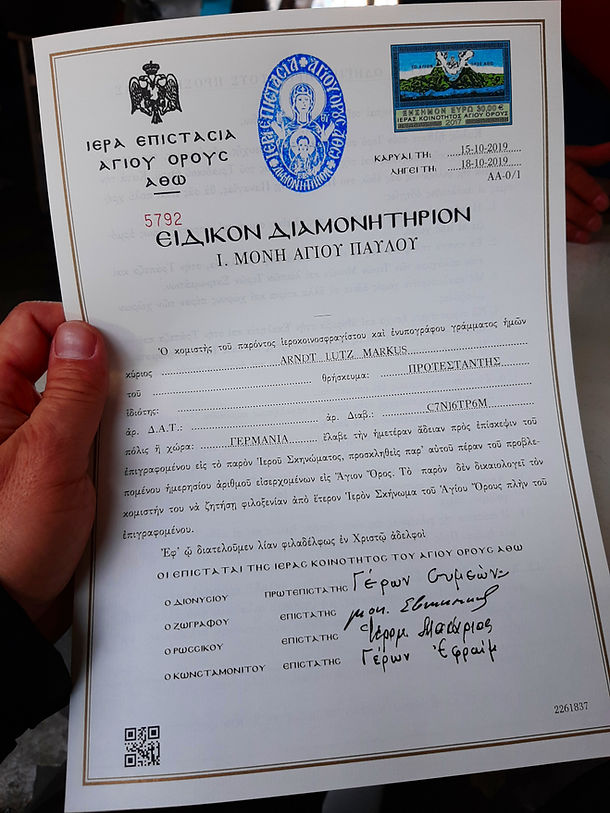
The next morning we went from Thessaloniki to Diamonitirion, a small port town that is also the last Greek place before the border with the monastic republic. From there the ships leave for Athos.
You can only get to the peninsula by sea, because there is no road by land, but instead a several kilometers wide, overgrown strip of nature that separates the republic from Greece.
After a few formalities in Diamonitrion, we finally had our visa in hand and waited for the ship.
The atmosphere at the small harbor was comparable to the atmosphere in a market. Many travelers were busy with the last few organizations, buying provisions or souvenirs, some were dozing while waiting, a babble of voices and languages filled the area and we sat expectantly in a small café, admired our visa, took photos of each other with it and left all that affect us. There were no more women to be seen, because women are not allowed to enter Mount Athos, so no one is waiting for a boat to take them there.
No lawsuits before the European Court of Justice and no money offers can help against this ban. Attempts have been made umpteen times to break this millennia-old regulation - all unsuccessful
Our ship, which finally came, was more like a soul seller than a modern Mediterranean ship, each passenger went through the visa control individually and with that we were, so to speak, entered.
There were only men on board and the situation somehow reminded me of a movie with Steve Mc Queen, in which men in South America are brought to a prison island on a rickety boat.
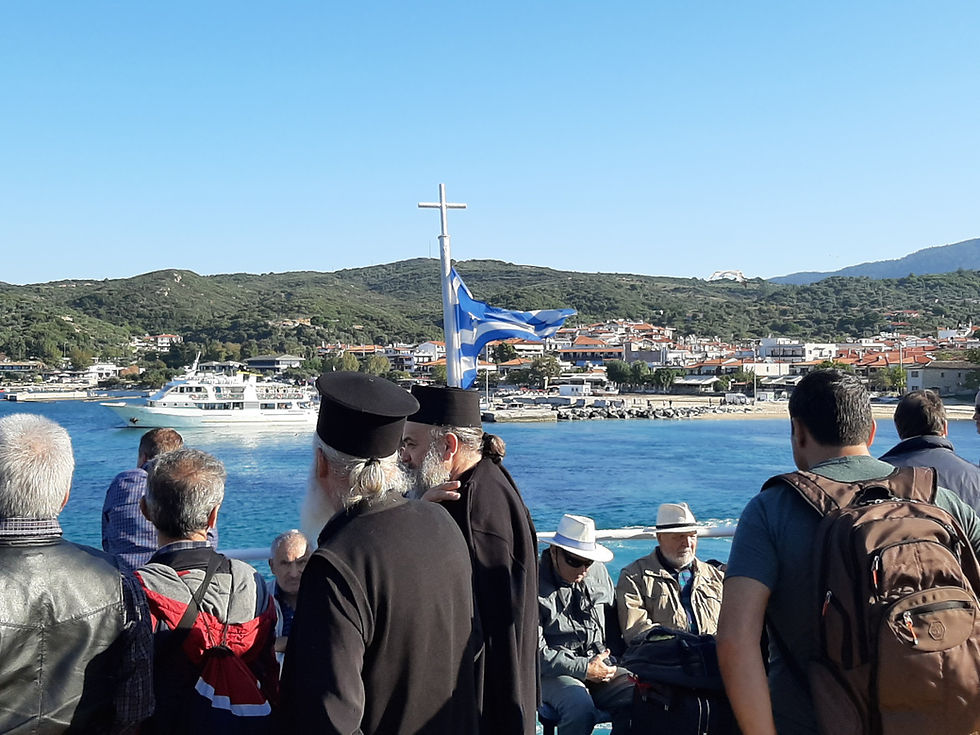


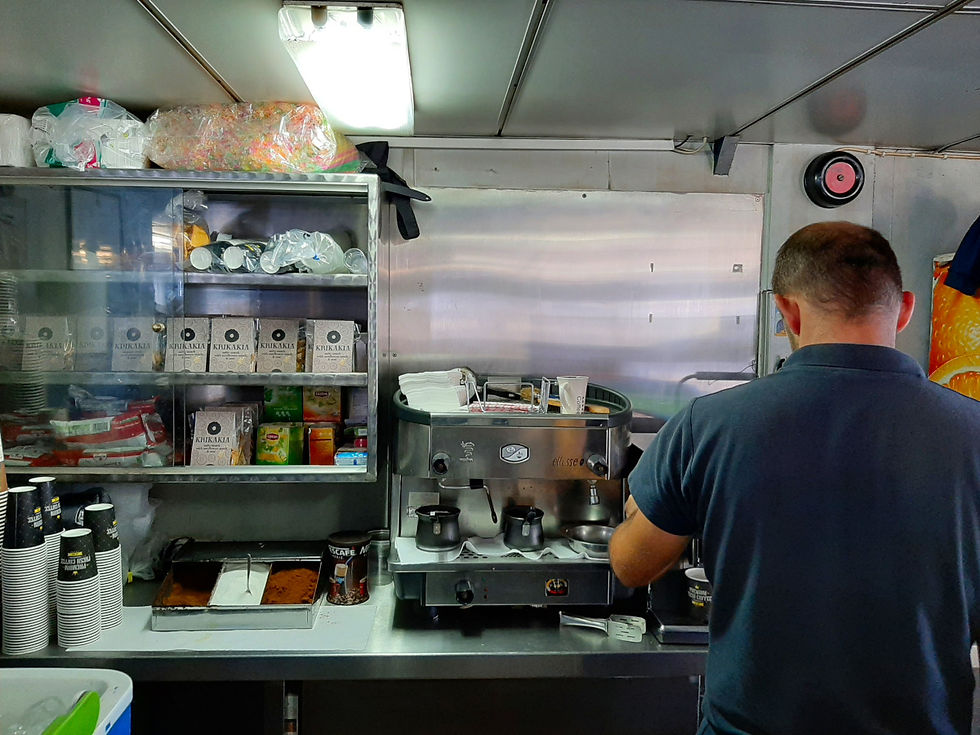
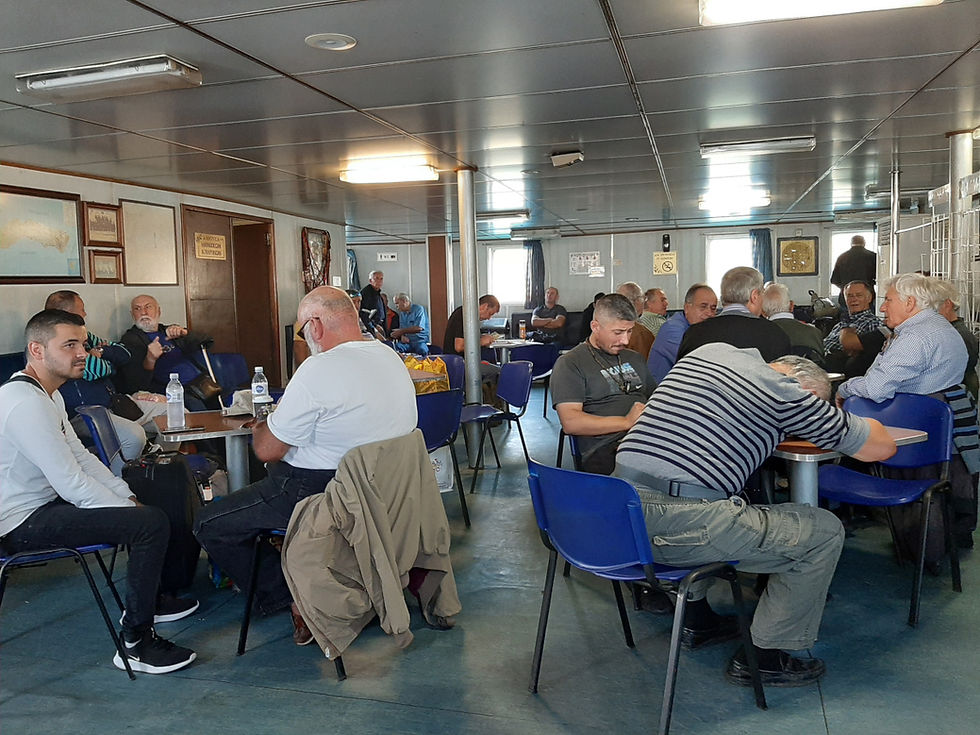

Wir fuhren an der Küste entlang, vorbei an den Klöstern Moni Dochiariou und Moni Panteleimonos.

Das griechisch-orthodoxe Kloster Moni Dochiariou
It went along the coast, past the monasteries Moni Dochiariou and Moni Panteleimonos.
There are a total of twenty monasteries on Mount Athos. 17 of them are Greek Orthodox, one each is Serbian Orthodox, Russian Orthodox and Bulgarian Orthodox.

Kloster des Hl. Pantaleon, bekannter unter dem Namen Rossikon, das russisch-orthodoxe Kloster

Das griechisch orthodoxe Kloster Simonos Petras
Like all diamonitrion ships, our ship arrived in Dafni, where many buses were waiting for us pilgrims at the pier to take us over the mountains to the other side of the peninsula to the capital Karyes.
163 men currently live in Karyes, there is a parliament there, to which each of the twenty large monasteries sends two monks. The government of the republic is formed by a total of four elected monks, who come from four different monasteries and are elected every year. They must take their decisions unanimously and affirm them with a seal that consists of four quarters, of which each of the four monks has one, who can then seal a resolution together.
Karyes is quite a lively city at times. Every time a ship has docked in Dafni, Karyes is teeming with pilgrims who wait for small buses, so to speak group taxis, which ultimately take them to the monasteries. In the past, everything was done on foot or on a donkey, but progress is also taking place on Mount Athos.
In the small town there is a center with the parliament, the main church of Athos, a university for Byzantine theology, the place where the buses leave, a small shop where you can buy something edible and a few other household items such as toothpaste or speed handkerchiefs can buy shops that sell liturgical items, icons etc. and of course there is a café.


Liturgische Gegenstände in einem Laden in Karyes
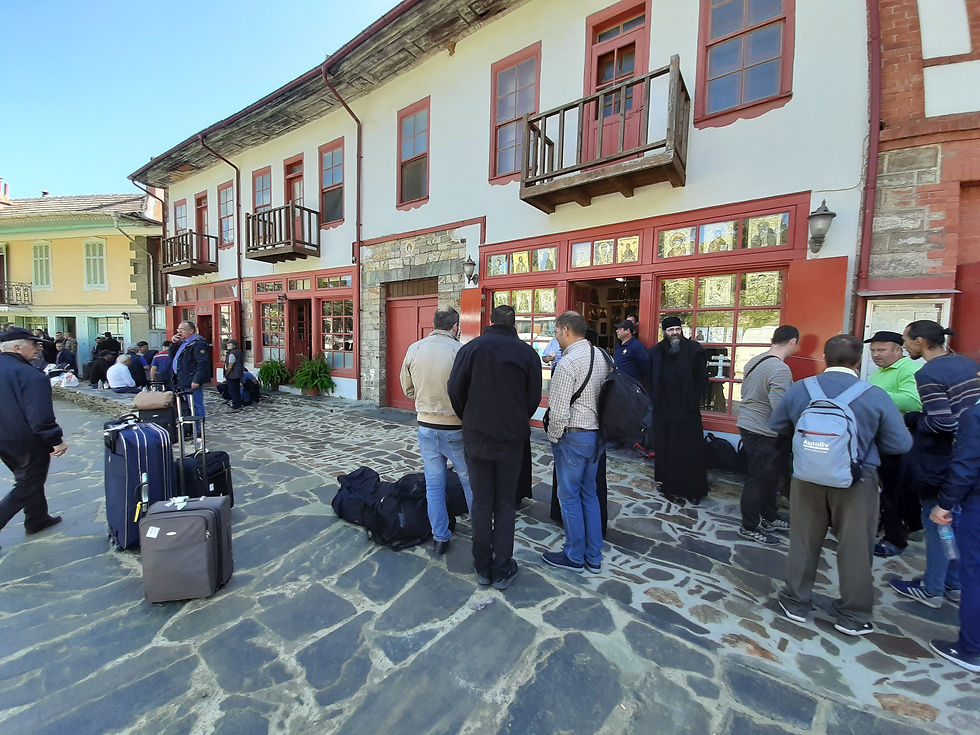
Pilger, die in der Hauptstadt Karyes auf die Busse warten, die sie zu ihren Klöstern bringen,
The Skite Mylopotamos
From Karyes we went to Skite Mylopotamos, our first accommodation. When we got there, it was already afternoon, we had been on the road for almost an entire day and we realized that a trip to Athos also means slowing down. Nevertheless, such a long drive is exhausting and we were happy to finally have arrived
A skite is a community of monks that is subordinate to a large monastery, but is run under self-administration by an elder. In the Skite Mylopotamos, which belongs to the Megasti Lavra monastery, two monks live who built and designed this place. They produce wine and monk Epifanios Mylopotamos is an excellent cook who has now written his own cookbook.

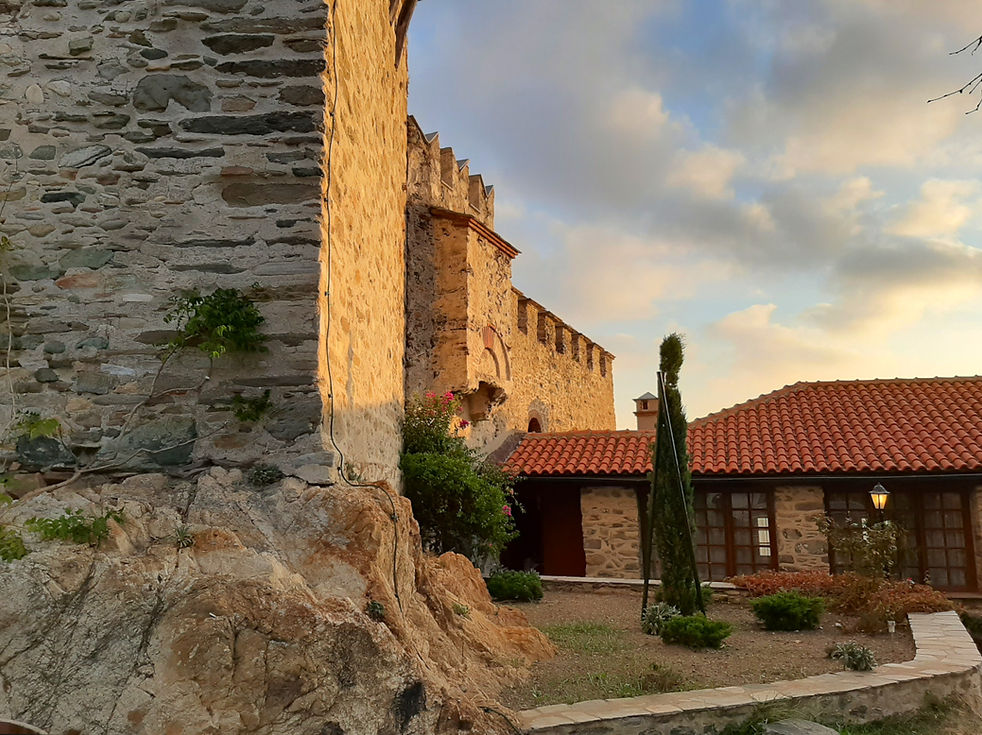
Kathisma Mylopotamos

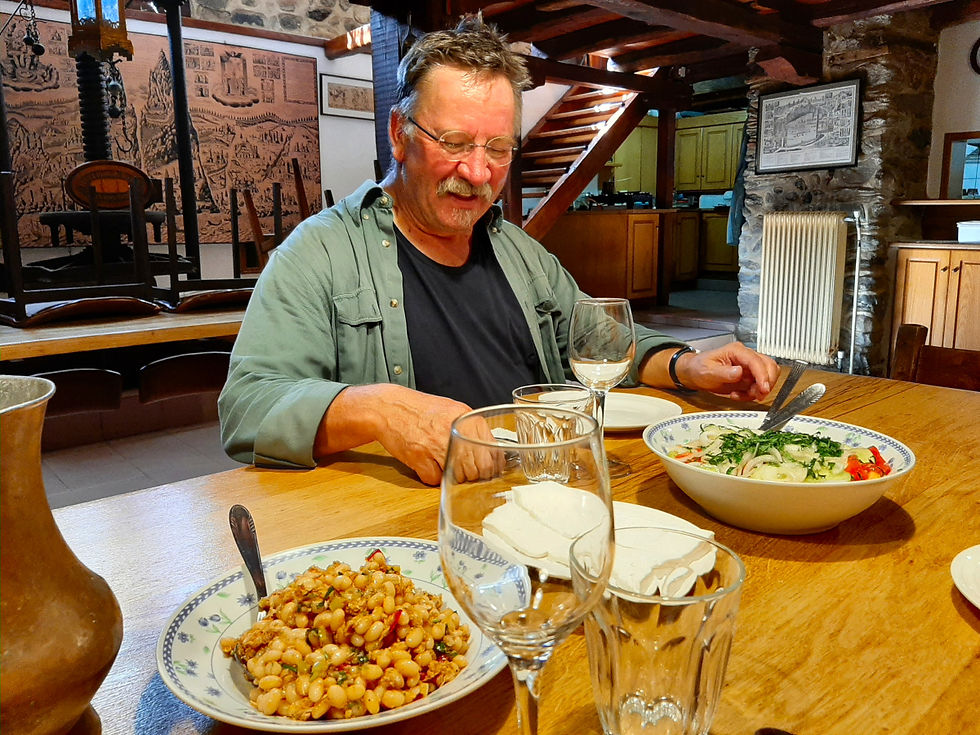
Nach unserer Ankunft, gemeinsames Abendessen mit dem Mönch
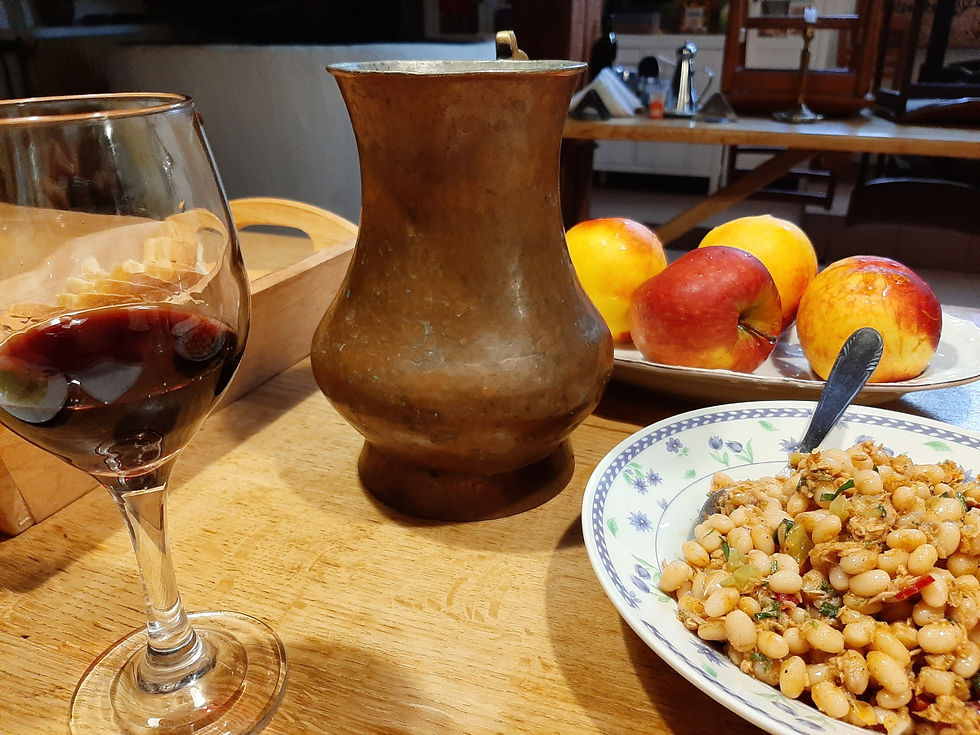
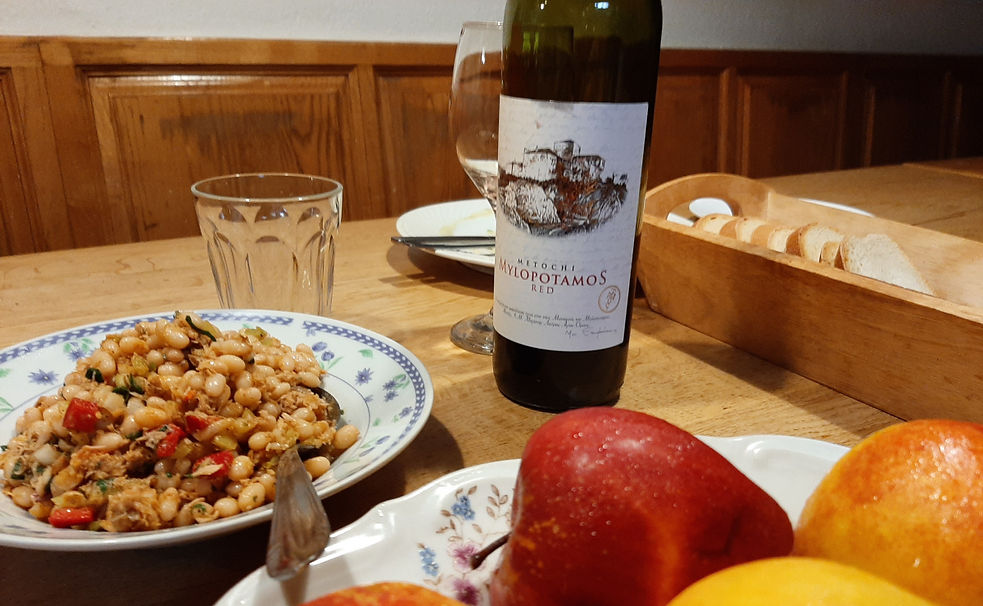
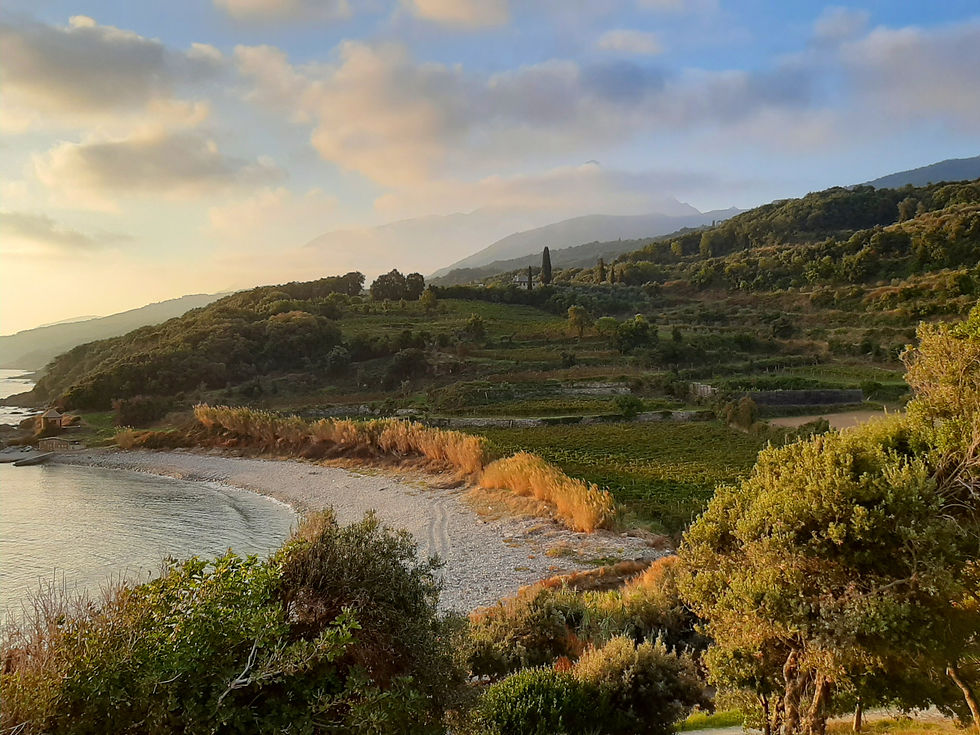
Tagesanbruch, im Osten geht die Sonne auf, der Berg Athos hüllt sich noch in Morgendunst.

Zum Frühgottesdienst entzündet jeder, der daran teilnimmt, eine Kerze. Der Bruder hatte schon vor uns angefangen.

Kathisma Mylopotamos, von der Terrasse hat man diesen atemberaubenden Blick auf den Berg Athos
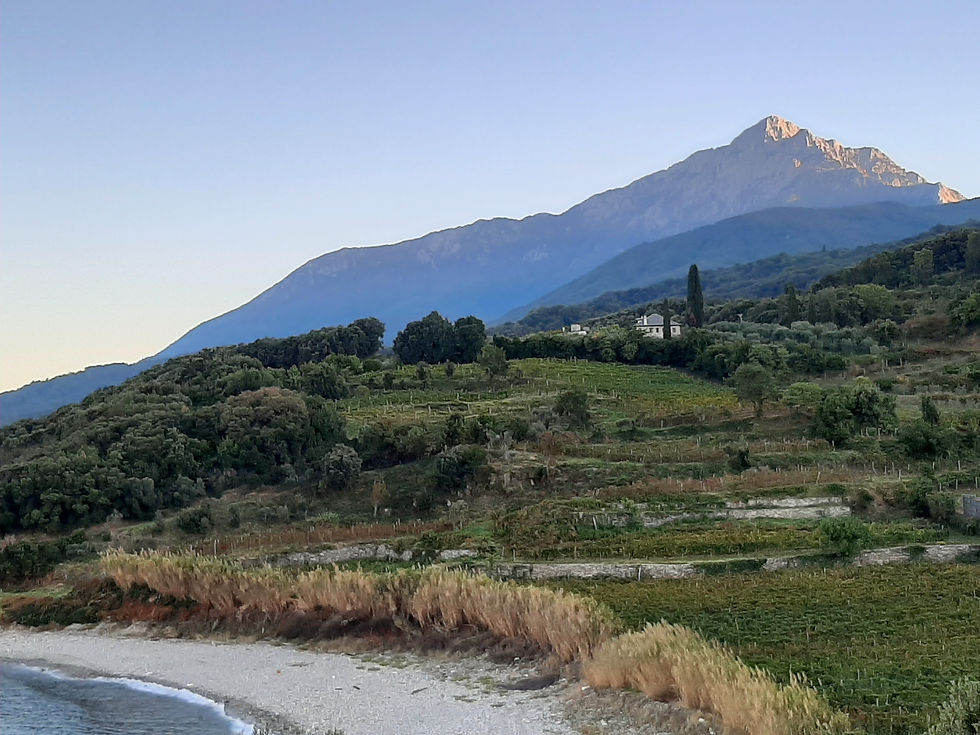

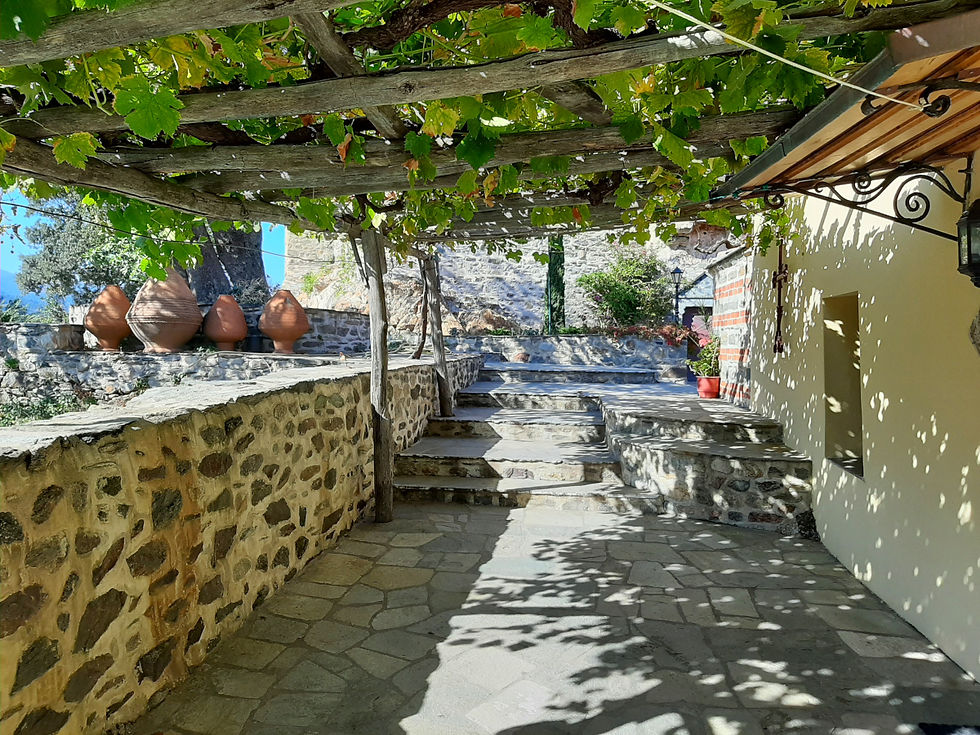
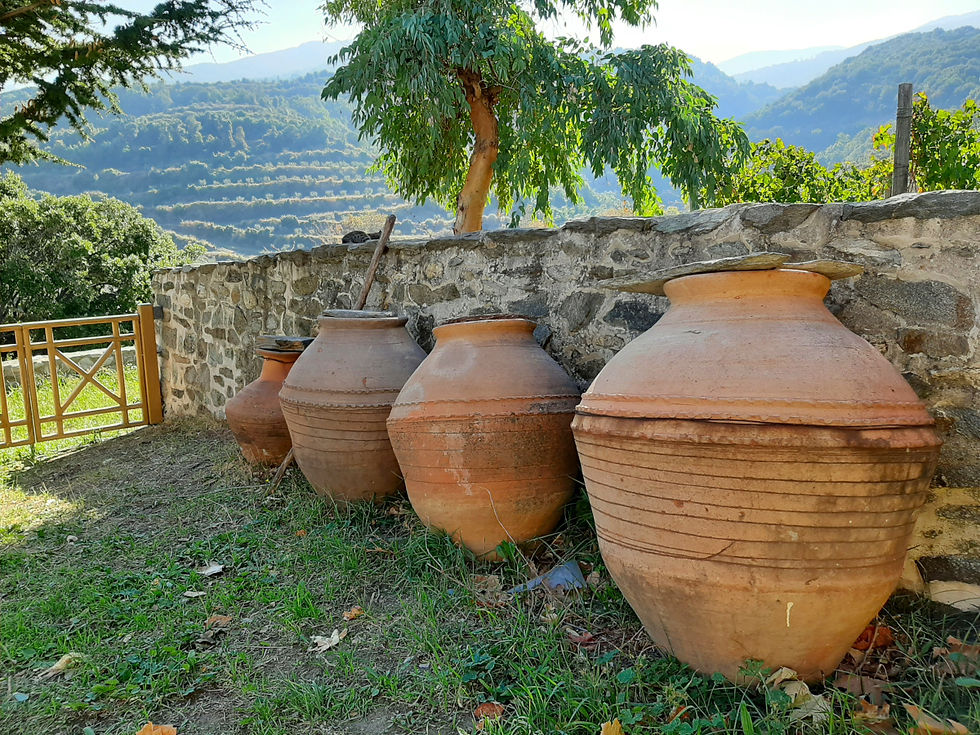
Iviron Monastery
Only half an hour to three quarters of an hour's walk from the Skite is the Iviron Monastery in a bay where Mary, Mother of God, came ashore during a storm in 49 while crossing over to Cyprus.
When we got to the monastery, the service was just beginning. We hesitantly dared to go to church, but no one had any objection to our participation. In an Orthodox church service, you can come and go whenever you want, there is no strict liturgical sequence as in the western churches, where the congregation follows the service from start to finish.
The atmosphere that we felt upon entering the church was overwhelming - the semi-darkness, which makes many things only tangible, the mysterious objects, the aura of the high room, which is vaulted by a dome, the shine of the golden icons in the dim light, the Mosaics in which the candlelight is reflected, the scent of incense - we felt the piety that has been carried into these rooms without interruption for thousands of years and that has grown like a layer of culture on layer of culture, so that the depth and dimension of this spiritual atmosphere could emerge.
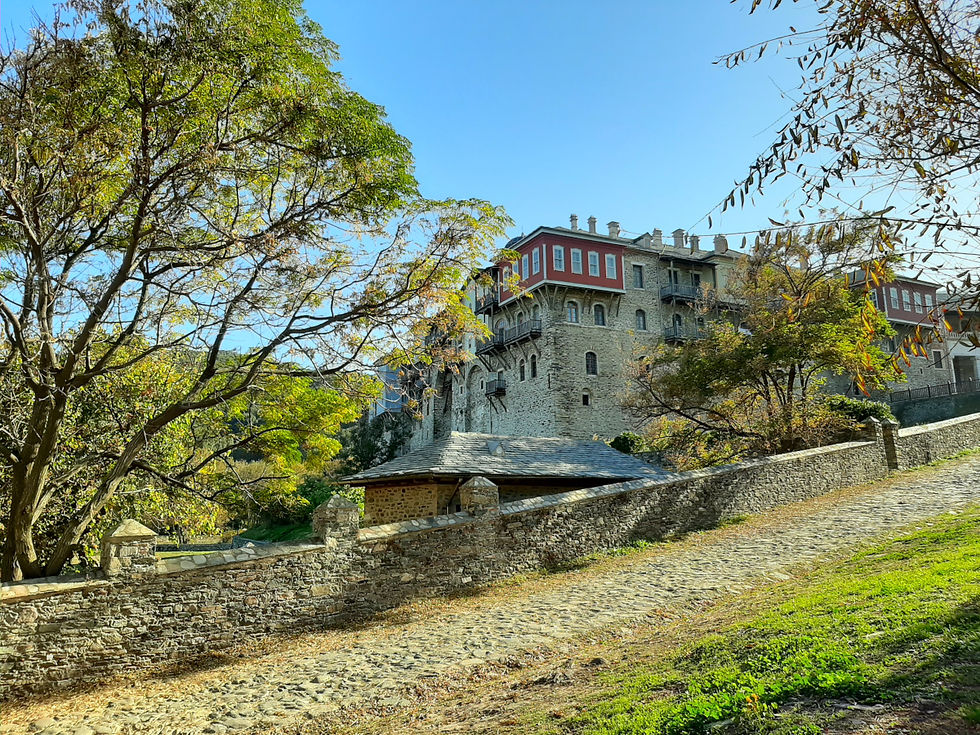
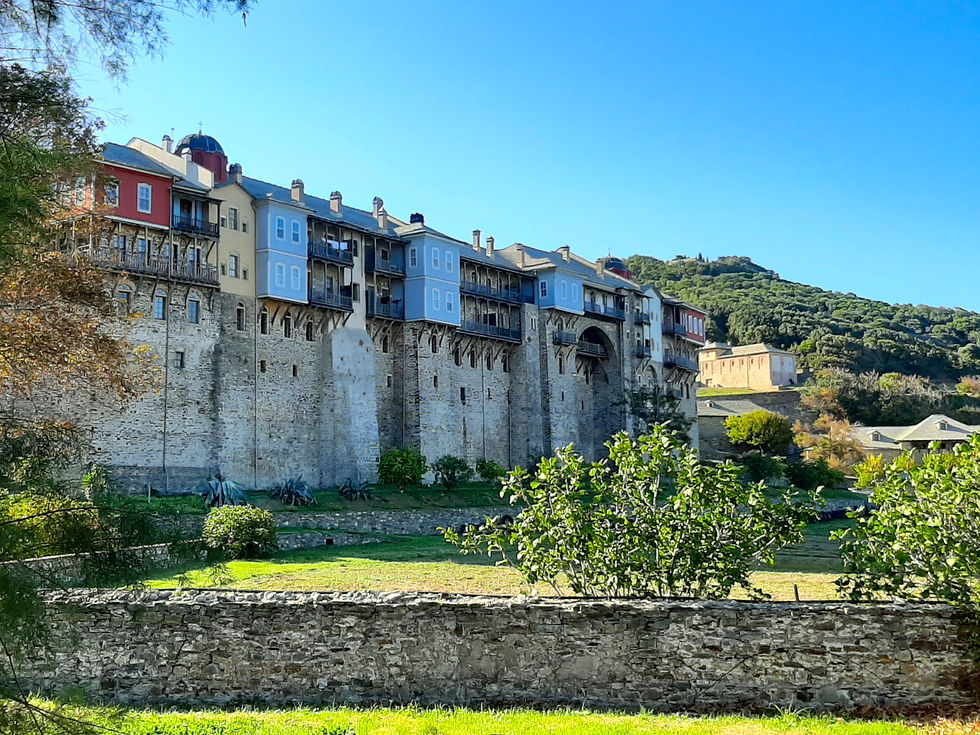
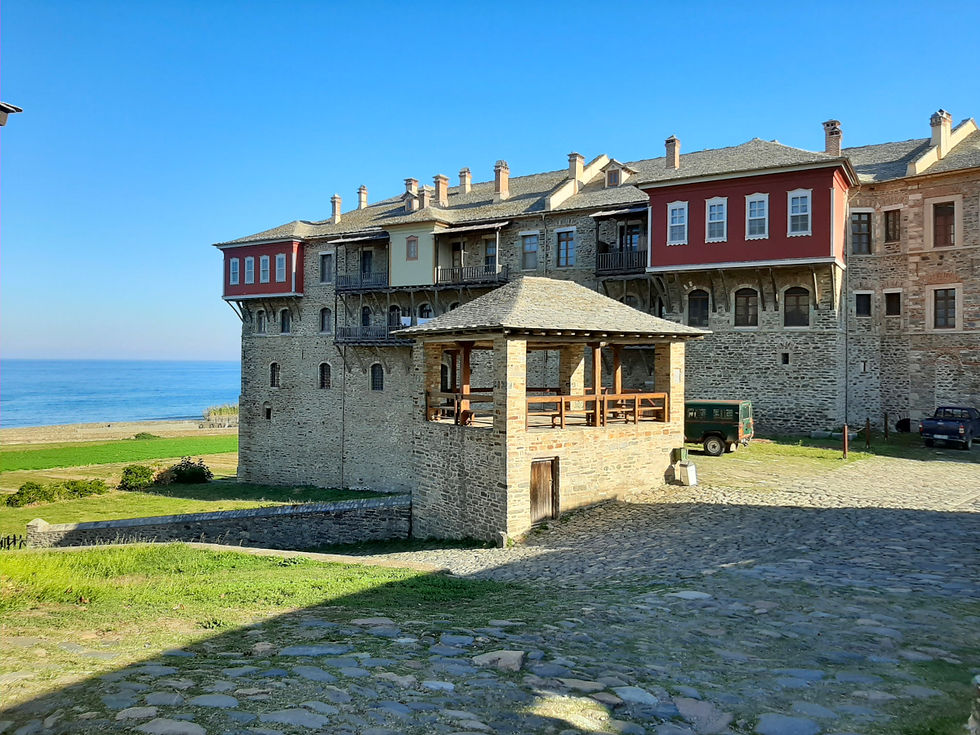


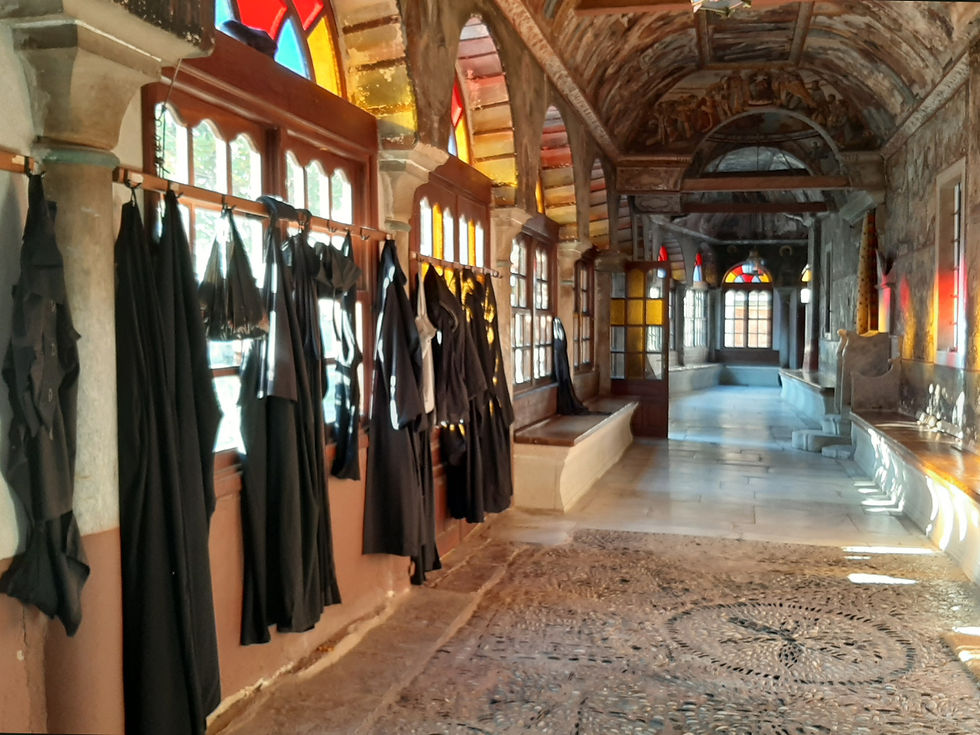

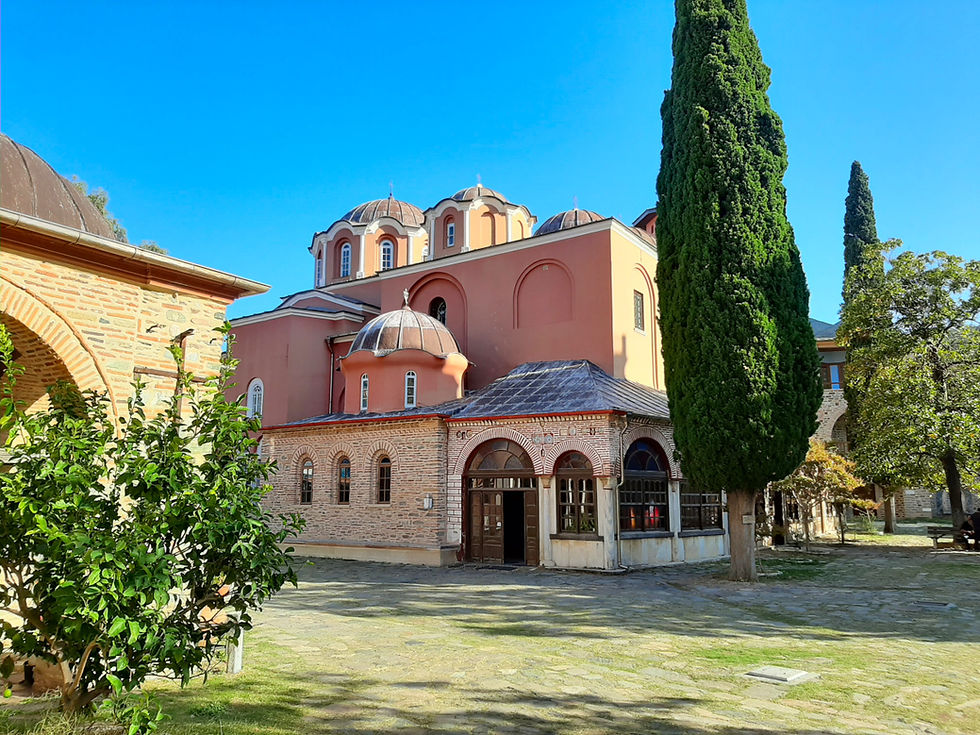
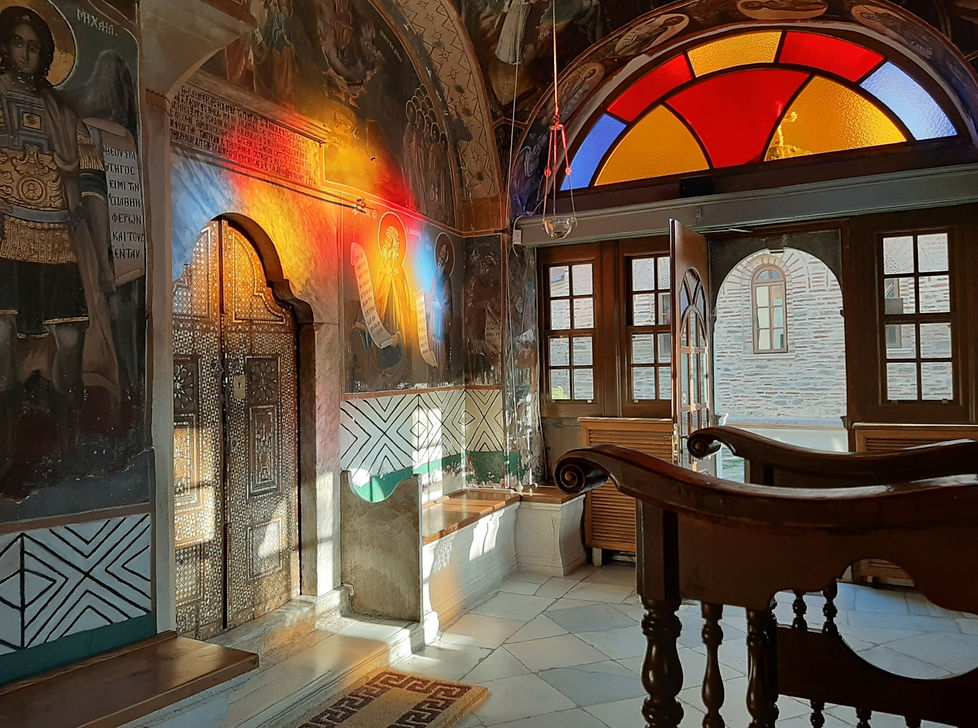
The next morning we went to the Dionysiou Monastery. During this trip I was permanently overtired - it was a pilgrimage and of course you feel uncomfortable under these circumstances if you don't attend the church services. Participation would not be a problem if the ritual didn't start at three in the morning and last until seven. Even if you come and go at an Orthodox church service when you want - there was simply not enough sleep.
The monastery of Dionysiou is enthroned on a rock, the complex is narrow, there are few opportunities for movement, but during the day you can go for a walk in the area. In the evening at sunset the heavy wooden gate is closed as it has been for over a thousand years and only opened again at daybreak. Whoever is outside or inside stays there overnight.
So one is locked in in the evening, watching the sunset from one of the balconies, which are mounted high up on the monastery wall like swallow nests over the abyssal rock, and hears loud talk around you in Slavic languages, Greek or Georgian. The mentality of the Southeast European pilgrims is different from ours - it's louder, a lot sounds impulsive and emotional. You go to bed early, which is necessary, because early in the night the hourly drum is hammering, a wooden board with which the church service is called with rhythmic blows of the hammer.

Kloster Dionysiou, Berg Athos
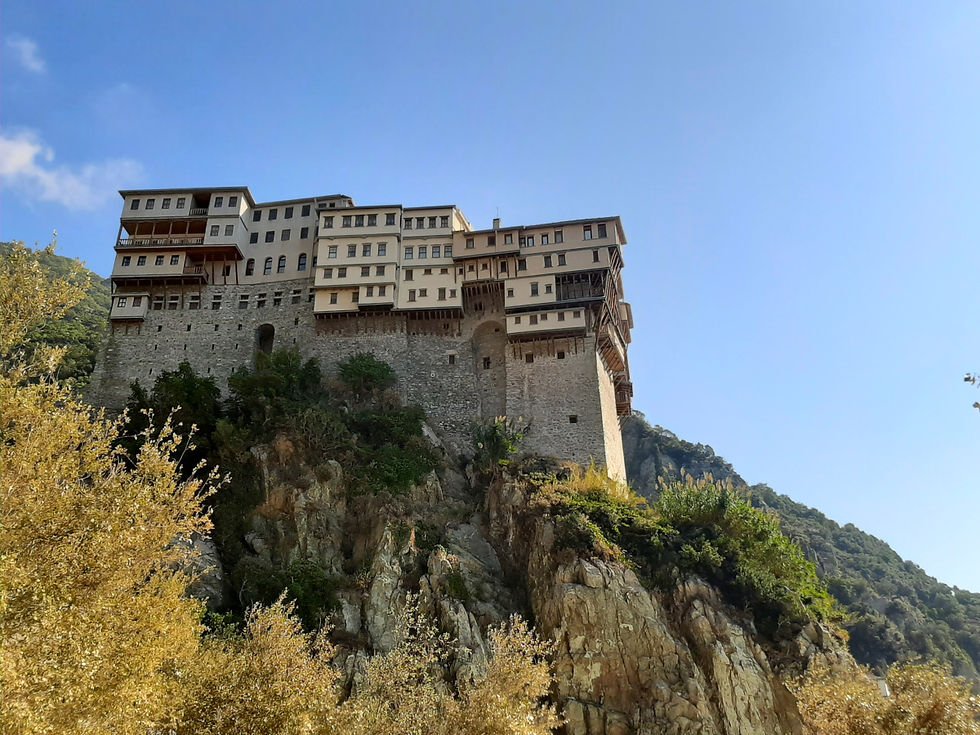



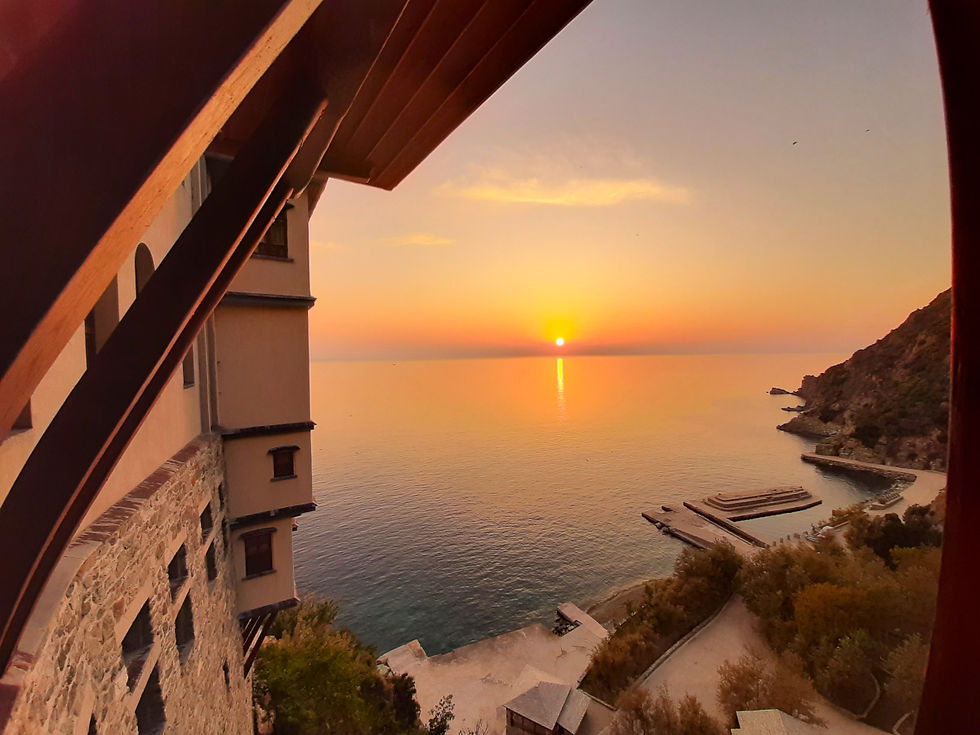
Sonnenuntergang von einem der Balkone, die an den Wänden des Klosters Dionysiou über dem Abgrund hängen.
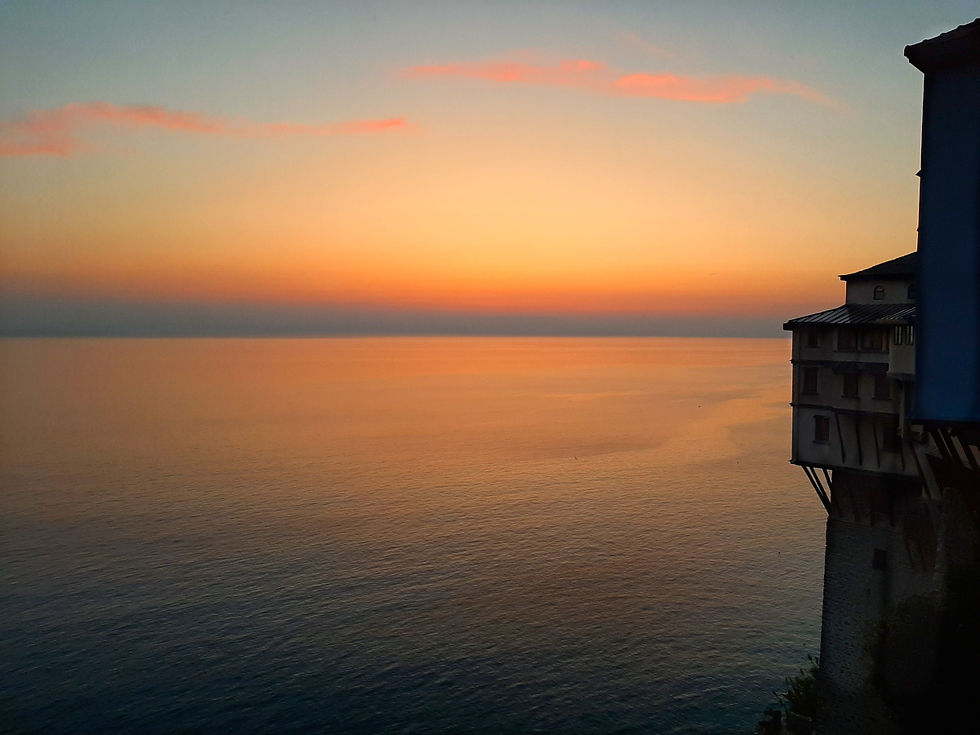
The monasteries on Mount Athos are not museums, but exclusively spiritual places. Visiting icons, for example even taking photos, is undesirable, maybe even forbidden. Our decency dictated that we didn't take a lot of photos, even though we would have loved to have done it. We did not photograph a single church from the inside, although these were the places with the densest atmosphere.
Athos is full of high quality art treasures, but they are kept in inaccessible libraries or other places. Some icons can be seen in the church (e.g. Madonna Portaitissa in the Iviron monastery), some relics can be seen after the service, but what you see is the decision of the monks and - as always - you only get it in a spiritual, liturgical one To see context. They are objects that are used, not scientific objects or art objects.
There are group dormitories, sparse food from tin bowls, where people sit side by side on long benches without speaking, the showers are cold, the sanitary facilities are definitely not for everyone.
Who takes on such hardships? I was quite amazed at the piety that men from the various Eastern European countries brought to this place and the efforts that they undertook to make the pilgrimage.
Conclusion:
Mount Athos is an unusual travel destination, but it is only partially suitable for study trips. You should go on a pilgrimage, then you will surely experience intense spiritual moments. The journey is exhausting because it is uncomfortable and you don't get much sleep, but pilgrims are happy to accept that.
Individual trips are quite possible, but you have to be prepared to immerse yourself in a world in which everything is geared towards faith. Overnight stays are only possible with monks, regardless of whether in a large monastery or in a skite. There is no accommodation outside of a monastic context. Skiing is probably more pleasant because the contact is more personal and the rituals are less strictly observed. Speaking at mealtimes is allowed and the completion of the meal is at the discretion of the elder, who can use the men's eating pace as a guide. As a pilgrim, you can help in the kitchen or with setting up and covering the table. Everything is organized collectively. There are no people on Athos who live there outside of a spiritual context. Bus drivers and craftsmen who come from Greece only live temporarily on the peninsula and are regularly exchanged.
In a skite we met a young German monk who had decided to live on Mount Athos several years ago in his search for spirituality. There are also some Greeks who lived and worked in Germany before they found their way here. One can immerse oneself in interesting conversations about the search for meaning, for God, saying goodbye to a life in the secularized world, about the security in a community, about the impossibility of the mother or sister ever helping her son or brother Being able to visit the place where he lives and even Stuttgart or the Siegerland can become an issue if a monk lived there in his previous life.
By the way, cell phones work extremely well in the monastic republic and to our astonishment every monk has a cell phone. Would have. we do not suspect in the whole situation on the holy mountain.


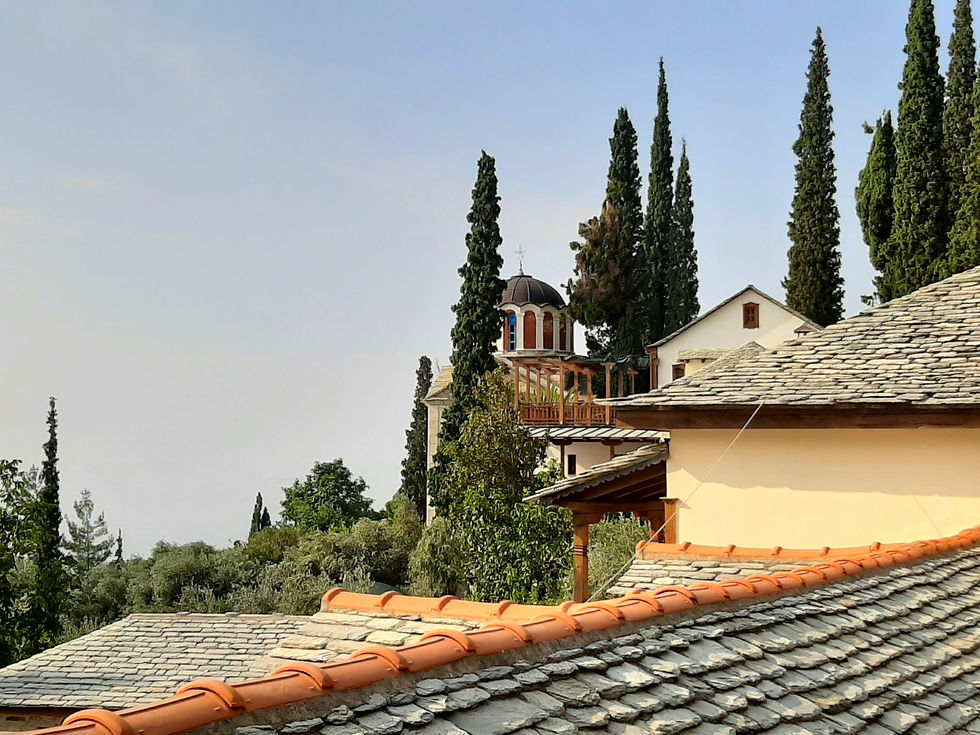
Wie kommt man an ein Visum?
Das Auswärtige Amt beschreibt das Prozedere auf seiner Webseite folgendermaßen:
Interessenten müssen sich mit ihrem Terminwunsch frühestens 6 Monate und spätestens 2 Wochen vorher zunächst telefonisch an das
Pilgerbüro der Heiligen Gemeinde des Athos in Thessaloniki
Herrn Christos Lolis (spricht Englisch) Egnatia Odos 109
GR - 54635 Thessaloniki athosreservation@gmail.com
Tel.: 0030-2310-25 25 78, Fax: 0030-2310-22 24 24 Öffnungszeiten: Mo. bis Sa. von 9.00 bis 14.00 Uhr, (telefonisch Mo. bis Fr. bis 16.00 Uhr erreichbar) wenden und den gewünschten Termin, dem Pilgerbüro mitteilen. Die deutschen Vertretungen in Griechenland können bei der Terminvermittlung nicht tätig werden.
Sobald die Möglichkeit einer Einreise vom Pilgerbüro telefonisch rückbestätigt wurde, müssen Sie den gewünschten Termin auch schriftlich per E-Mail beantragen und zugleich Fotokopien des Reisepasses bzw. Personalausweises an das Pilgerbüro übersenden. Das Pilgerbüro wird daraufhin die Unterlagen prüfen und den Termin schriftlich bestätigen (erlaubter Zutritt pro Tag beschränkt auf 120 Personen, davon nur 10 Ausländer).
Sobald der Termin bestätigt wurde, müssen Sie sich eigenständig um Ihre Unterkunft bemühen, indem Sie sich hierzu direkt mit den Klöstern auf dem Berg Athos in Kontakt setzen. (Kontaktdaten über das Pilgerbüro oder z.B. über die Webseite http://mountathosinfos.gr/monasteries/). In der Regel gewährt ein Kloster Gastfreundschaft für nur eine Übernachtung.
Spätestens zwei Wochen vor der Einreise muss der Einreisetermin nochmals telefonisch gegenüber dem Pilgerbüro in Thessaloniki bestätigt werden, da sonst die Vormerkung verfällt und der Termin anderweitig vergeben wird. Schließlich muss man sich rechtzeitig (den genauen Zeitpunkt erfragen Sie bitte beim Pilgerbüro) vor der bewilligten Einreise beim Pilgerbüro in Ouranopolis einfinden, bei dem man sein eigentliches Athos-„Visum“ erhält. Eine Vorsprache beim Pilgerbüro in Thessaloniki ist nicht (mehr) erforderlich.
Die Vorlage eines Empfehlungsschreibens der Deutschen Botschaft Athen, des Generalkonsulats Thessaloniki oder der Kirchengemeinde ist nicht erforderlich.
Das Pilgerbüro erteilt Einreisegenehmigungen („Diamonitirio“) im Rahmen eines vorgegebenen Kontingents in der Regel von zehn ausländischen Besuchern pro Tag. Außerhalb dieses Kontingents werden grundsätzlich keine Genehmigungen erteilt. Die Entscheidung des Pilgerbüros ist nicht anfechtbar. Die Dauer des Aufenthalts beträgt höchstens vier Tage (drei Übernachtungen, jedes Kloster kann nur für eine Nacht Gastfreundschaft gewähren).
Es sind Gruppen bis zu max. 5 Personen erlaubt. Die deutschen Vertretungen in Griechenland können weder eine Verlängerung der Aufenthaltsdauer noch die Zustimmung der Einreise einer größeren Besuchergruppe erwirken.